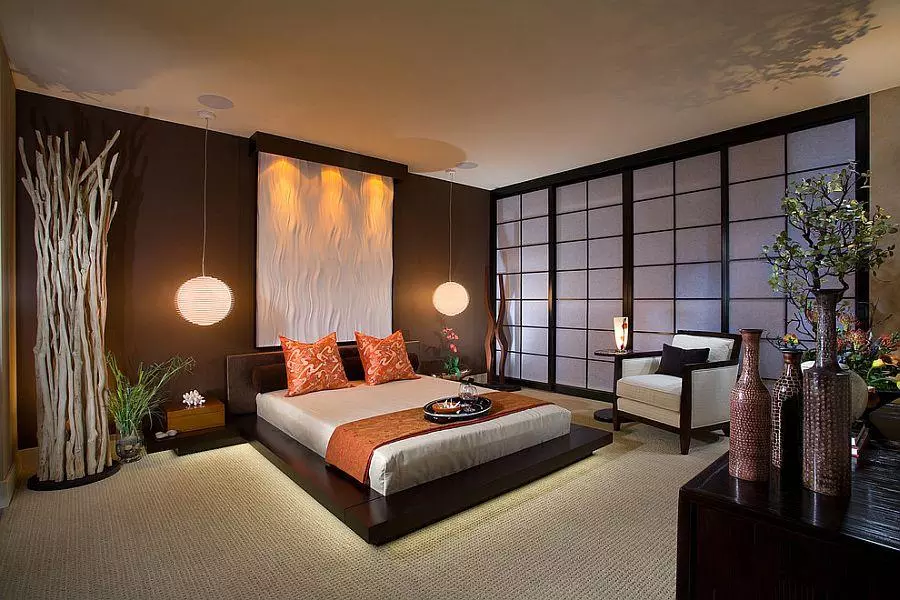A mix of Scandinavian interior design and Japanese minimalism has given birth to an entirely new trend Japandi interior design style. A philosophy of Zen inspired by simplicity and naturalness. This philosophy is translated into home decor by adapting clean lines, the most minimalistic approach to decorating, and simple furnishings.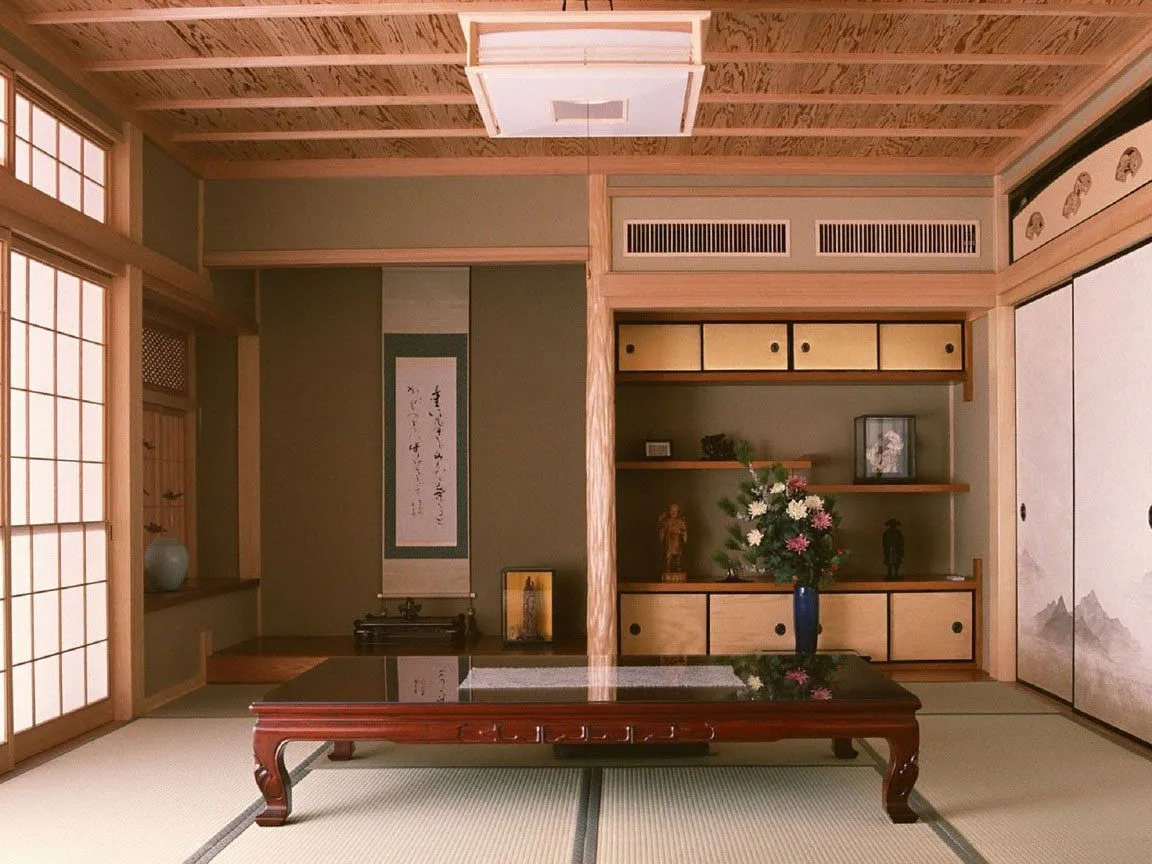
One of the key questions they ask is how will this design enrich their lives. After collating answers, they are sure to constantly refer back to the list to ensure the designs are specific to each client. Read on to discover how to add elements of Japanese-inspired interior design to your home.
1) Elements of Nature in Japanese Style Interiors
Japanese culture is saturated in love and respect for nature. The best way to maintain a strong connection with the natural world is to bring nature indoors.Adding tradition Japanese plants, such as bonsai and bamboo, into your home will give it a small Japanese cultural touch. Really though, you can add any sort of deep greenery and still achieve a similar style. Consider adding sleek plants such as palm or orchid to your home. It is not typical to see a lot of colorful floral arrangements in a Japanese home, so whatever plant you choose, keep it simple, natural, and green.
Japanese homes also bring nature inside through large, expansive windows that allow a view of nature from every angle. Like this bedroom, featured below, the large sliding glass door brings serene, natural views indoors. Open up your home to the wonders of nature today.
2) Soaking Tubs Are Important in Japanese Interior Design
Ofuro, translated as a bath in Japanese, is a tranquil tradition that is well-worth adding to your home. Japanese soaking tubs are small, deep tubs that usually have some sort of bench seat.Commonly known as an ‘Ofuro’, Japanese soaking tubs boast a plethora of benefits. They are deeper than western bathtubs and are typically housed in wood, but also available in acrylic and polyester They are ergonomically designed to offer support and relaxation. Aside from their physical health benefits, soaking tubs are a wonderful and unique design feature to add to the home. Granted, not every house has the space to accommodate a bathtub let alone a soaking tub. However, if possible, for both health benefits and fantastic design individuality, substitute your westernised bathtub for an Ofuro. 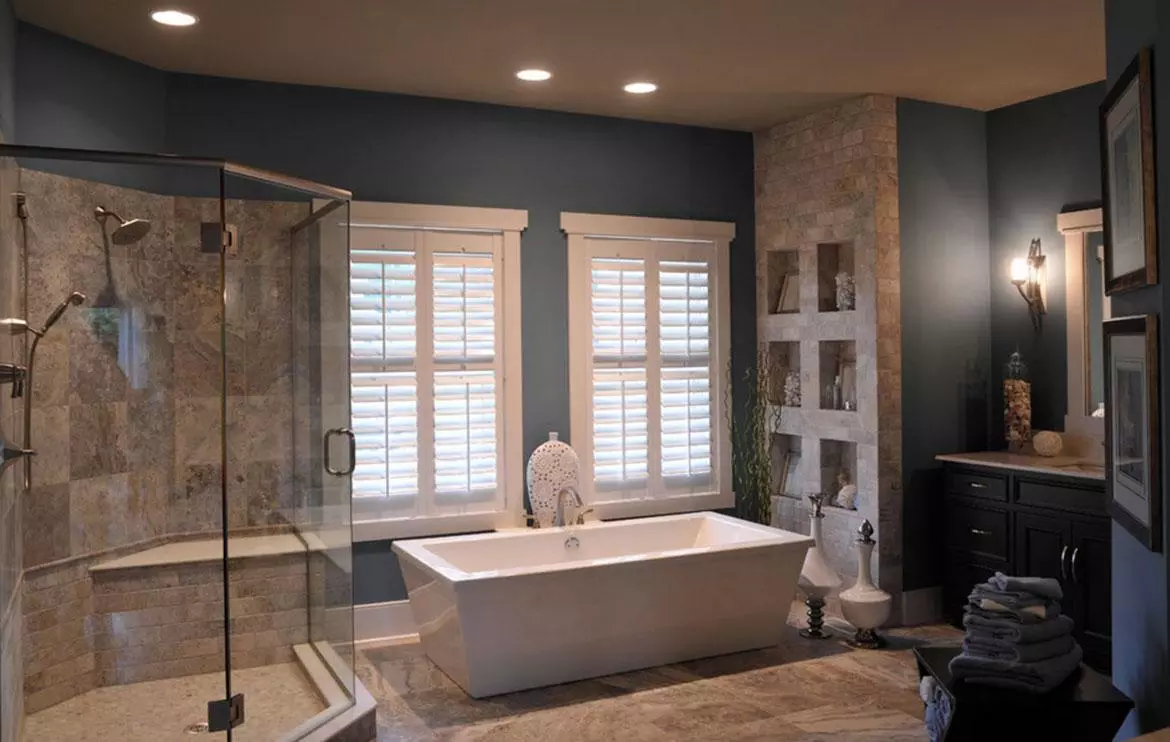
The serene sounds of water bubbling will fill your meditative ears and immediately have a calming effect. Just like plants, elements of water are imperative in the Japanese home. Turn your bathroom into an enlightened escape by adding one of these soaking-style tubs. It is the ultimate way to have East meet West, and create a spa-like environment in your home.
3) Japanese Style Sliding Doors or Screens
An increasingly popular feature in modern homes of today, sliding doors and screens establish spaces which embody the qualities of the zen philosophy. Screens and sliding doors are not only a practical addition to the home, their presence is subtle and discreet. They add lightness and intrigue without overpowering a space, as seen in spaces transformed by Shoji. It is imperative to remember that an essential quality of Japanese style is to keep the space as minimal and humble as possible. The addition of sliding doors and screens adheres effectively to this brief.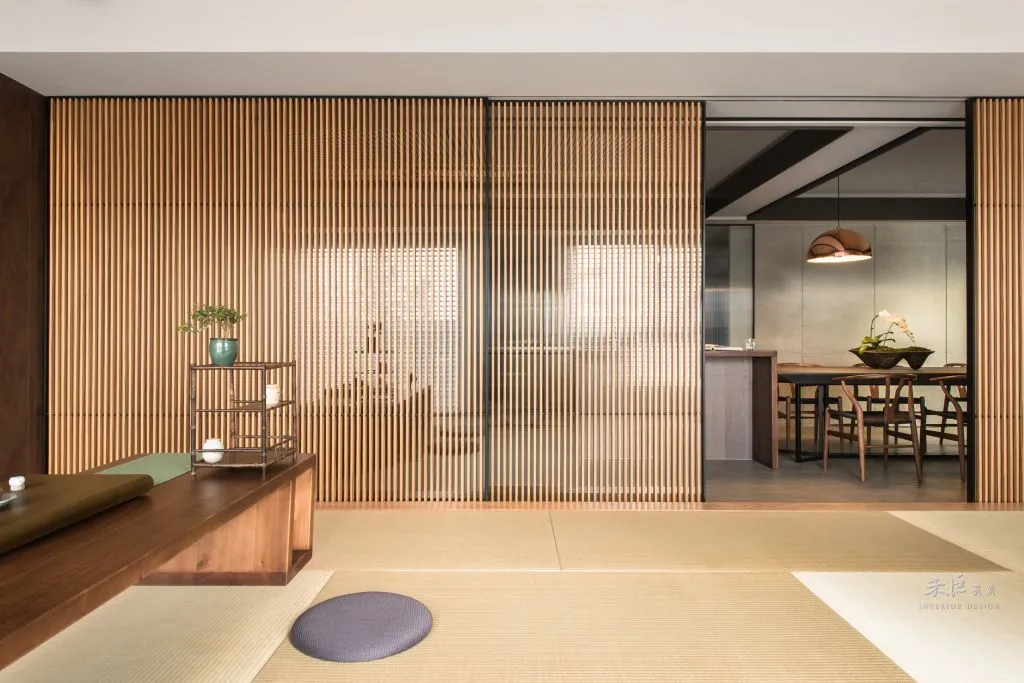
An authentic Japanese screen is called a Shoji, and it is an essential design element in Japanese homes. Due to the high cost of housing, Japanese homes tend to be small and a lot of residents rent apartments, so conserving every square inch of space is essential. Unlike doors, these Shoji’s slide back and forth, saving space that a swinging door would take up.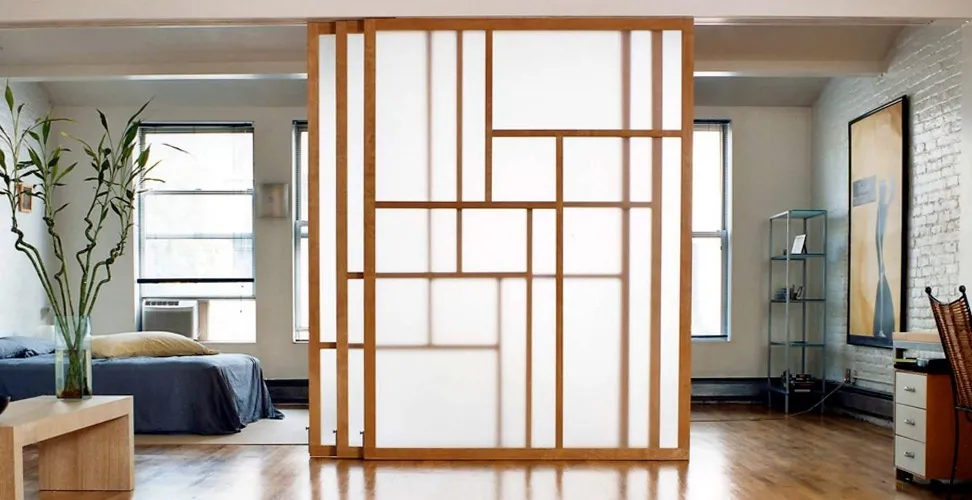
An authentic Japanese screen is usually made of fine translucent paper held inside a wooden frame. However, modern versions of these screens can be found online and are usually made of glass panels inside a wooden grid.Another key element of these screens is that, unlike doors, they do not block the natural light and views of nature. Replacing a large expanse of wall with a glass-paneled sliding door could be a great way to incorporate this style into your own home.
4) Elements of Wood and Bamboo in Japanese Interior Design
One of the best ways to harmonize with nature is to add natural wooden elements into your home. Japanese culture is known for using wooden elements throughout their homes.
Walls, doors, screen grids, and frames are all made of natural wood. The most common woods being western versions of maple, cypress, hemlock, and red pine. Bamboo is also a popular wood used for decorative purposes.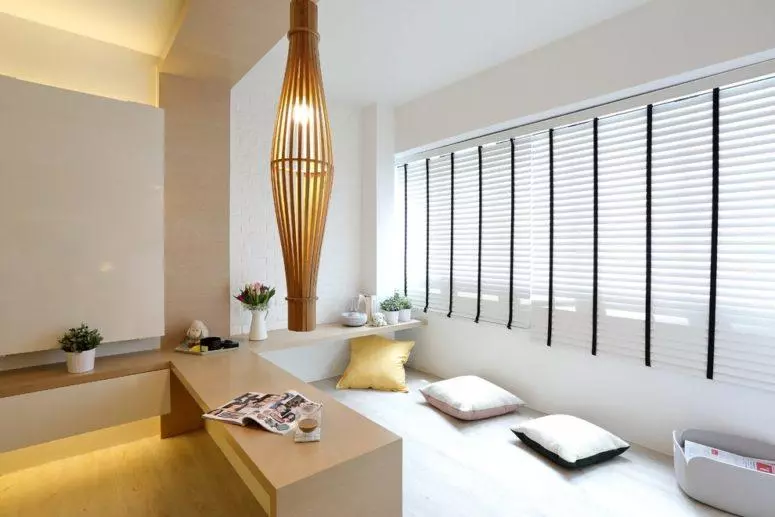
Essentially, the texture of the wood can be seen everywhere in a Japanese home. Try bringing these natural wooden elements into your home by adding a bamboo floor, or wooden screen. You will love the serene calming effect that clean-lined wood elements can add to your home.
5) Japanese Style Entryway
The Japanese entry is called a genkan. This is the area that greets visitors and also the place where shoes are immediately taken off and usually replaced with indoor slippers.
As you notice in the image below, the entryway has a shelf or cabinet called a getabako that is used for storing shoes (tips of the shoes are usually placed pointing outwards, unlike the image below). As you will also notice, the entry is simple in design with wooden elements and a lot of natural lighting.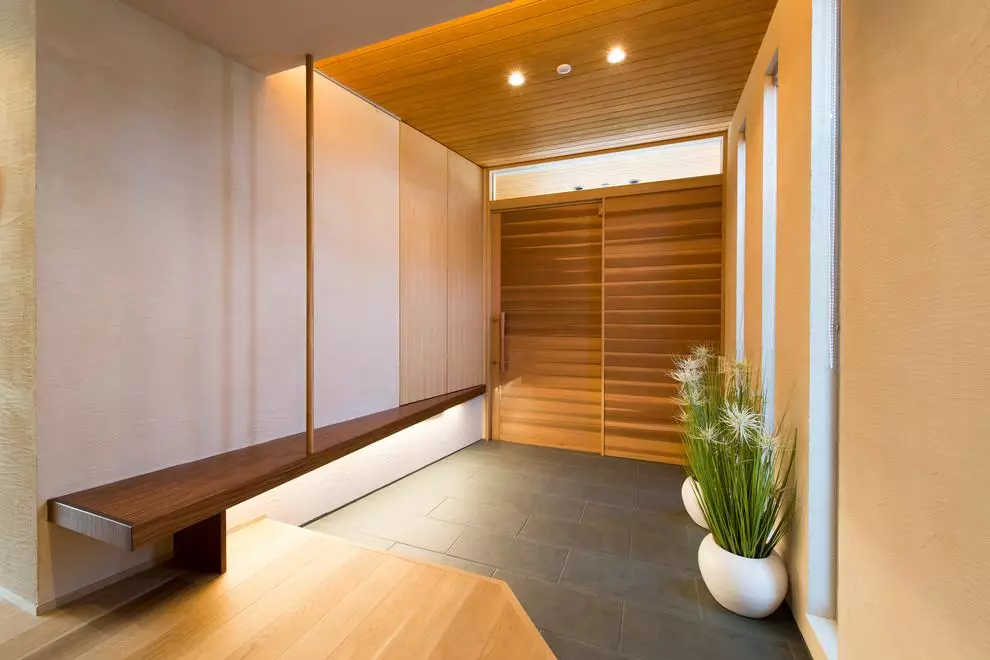
Stone tile flooring is also popular in these homes, especially the entryways. In order to mimic this design, we suggest copying the clean, simple lines of Japanese design. Keeping your entryway uncluttered may be the biggest challenge (especially for North American homeowners who tend to house some clutter in their entry’s such as mail, shoes, etc..).
6) Japanese Style Furniture
As we navigate to the bedroom and investigate how to incorporate a Japanese style, an effective addition is a bed that sits low to the ground. This subtly mimics commonly used futon beds in Japan, a thin mattress that sits directly on the ground without a frame. A compromise is to invest in a low standing bed frame. Stylistically, this concept gives the illusion of space. The room will feel instantaneously bigger, and the bed won’t be an obstruction to the rest of the room, once again adhering to the humble and understated nature of Japanese-influenced interior design.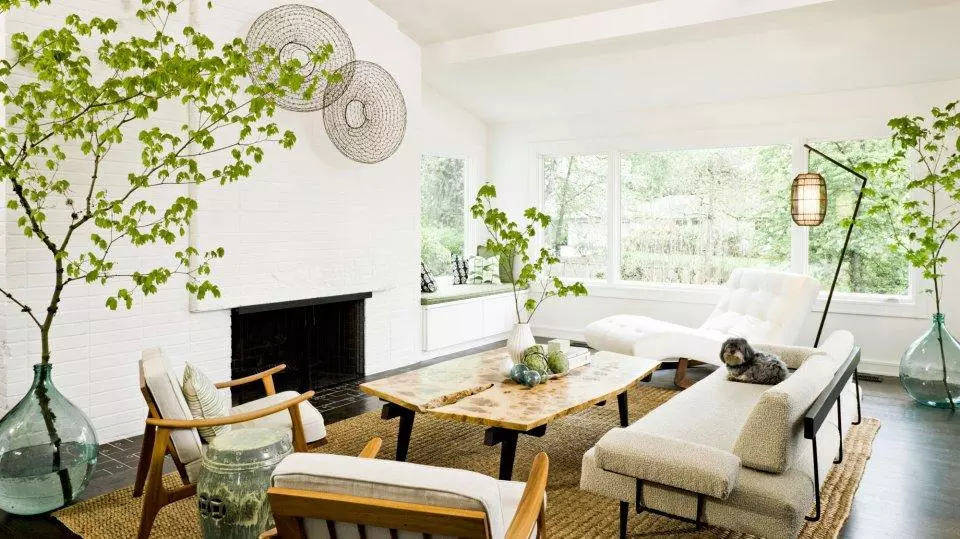
While a lot of authentic Japanese homes do not segregate furniture-filled rooms for certain purposes such as a sitting room or TV room, we can still mimic Japanese simplicity into our sectioned-off homes. Most of Japan’s furniture is low to the ground, or when it comes to tea ceremonies, floor cushions usually forgo furniture. Mimicking this design aesthetic can be as simple as incorporating low-to-the-ground furniture into our homes, such as the simple side tables and bed frame featured in the image below.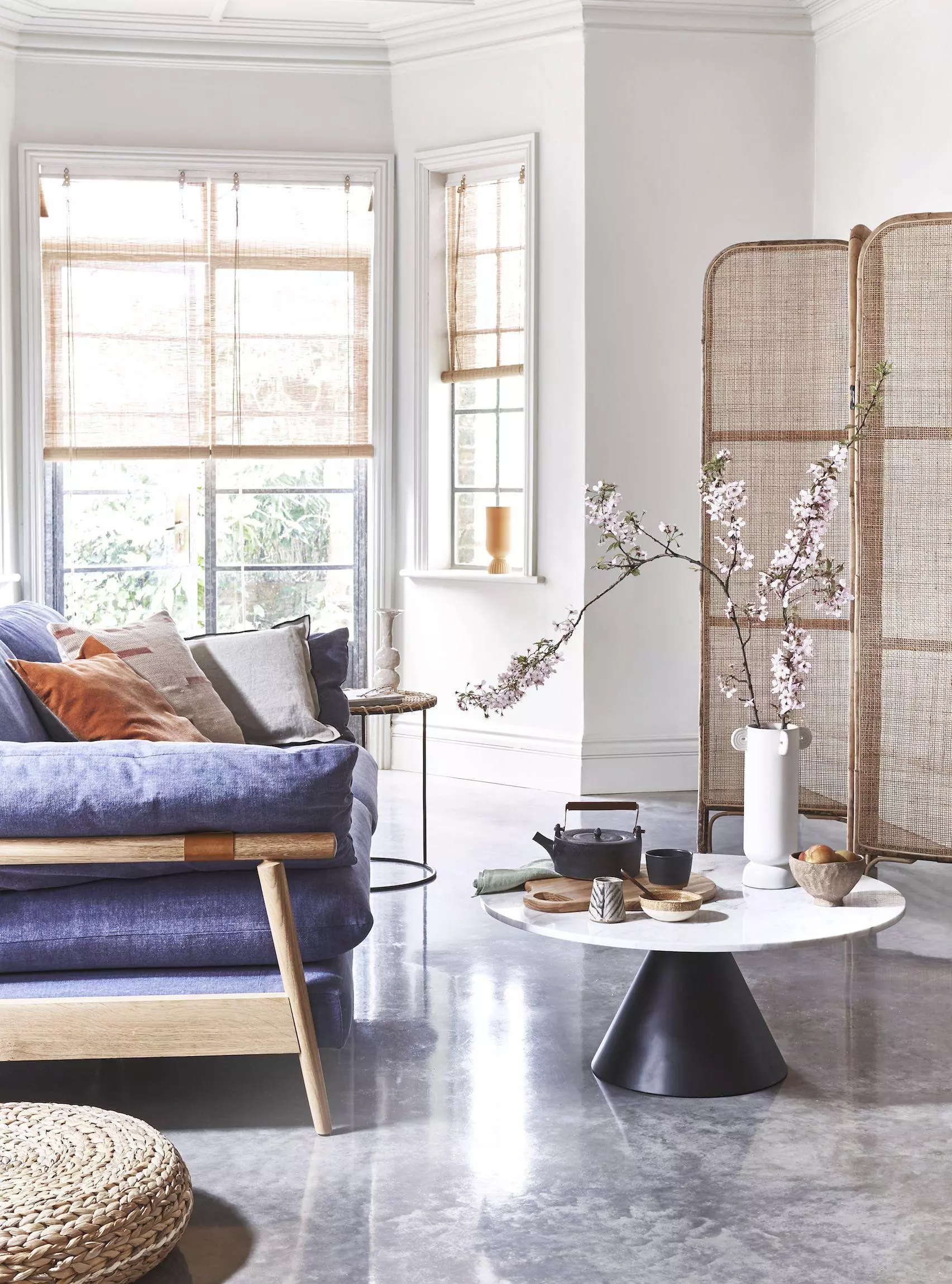
Or we could be more authentic by surrounding a low plank table with floor cushions—using this as a means to dine would be very bona fide, and maybe even a bit romantic. Whether you want more of an East meets West design, or you want to be extremely authentic — Japanese style furniture can easily be incorporated into your home.
7) Minimalist Japanese Design Principles
The Japanese style truly adheres to the phrase “less is more”. The Kawamotos exhibit this principle when designing for their clients. They utilise the space in a non-overbearing way, keeping in mind understated styling for the everyday use. A minimalistic approach to styling creates a space that is in a way, uninhabited, free and open. The intention is for your home to create a desired mental state. What better way to instill clarity in the mind than to have clarity in the home?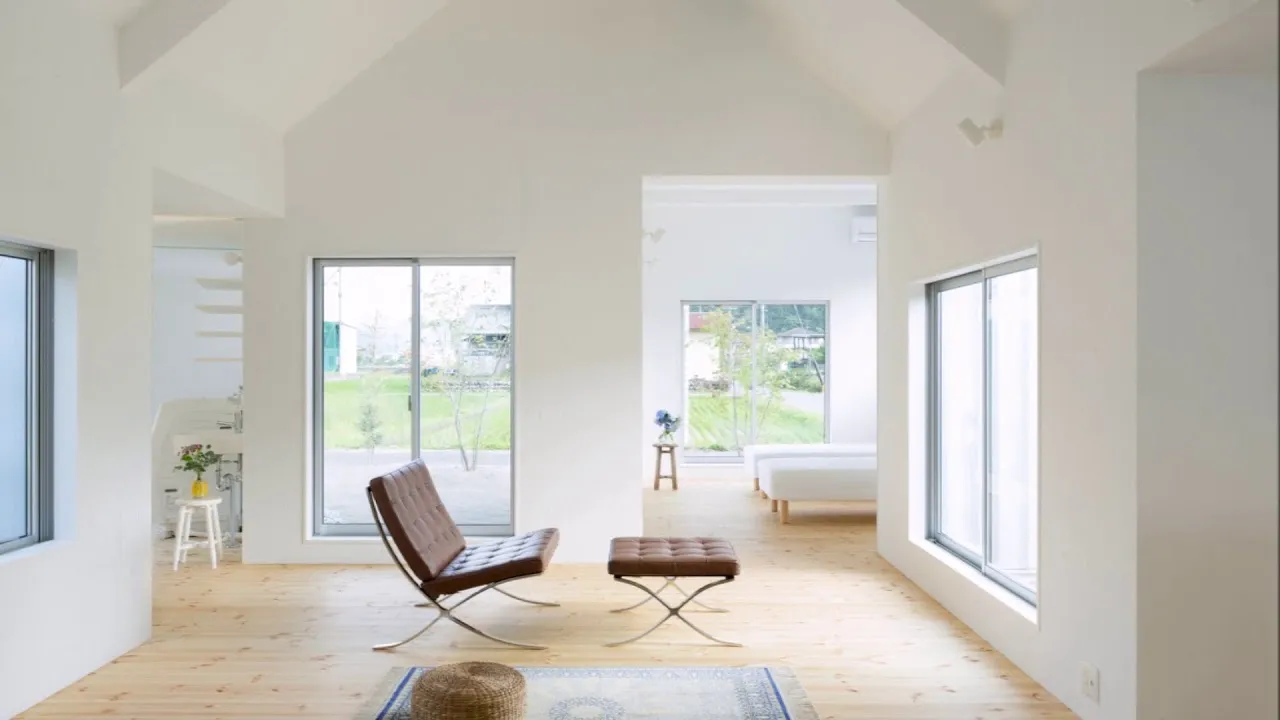
This movement has truly gained traction and shows no signs of slowing down. A Minimalist interior design is incredibly popular in modern day homes, and truly pays homage to the foundations of Japanese design.As you can probably already tell, Japanese design is clean and minimalist. Clutter is not contained in these homes. As we discussed above, sometimes there isn’t even much furniture in an authentic Japanese home.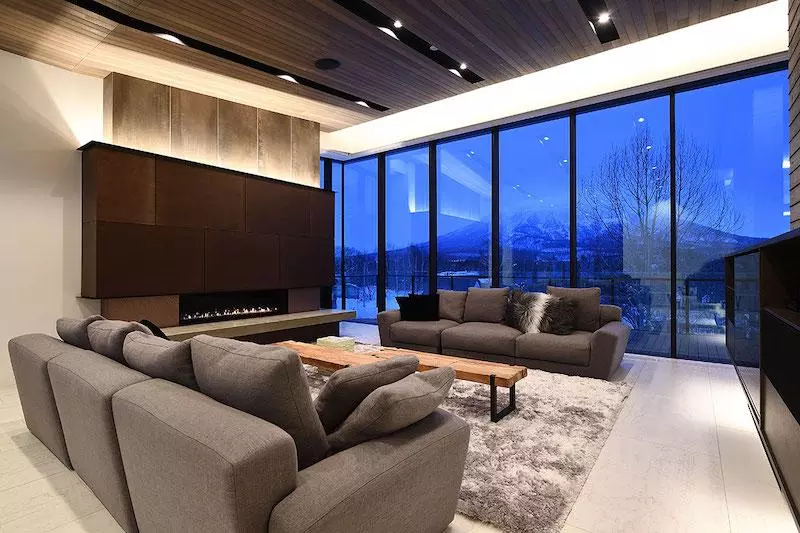
The trick is to keep your design simple and uncluttered. Most modern design aficionados will find this style easy to replicate. Furniture should be modern, clean-lined, and made of natural wood. Lighting should be angular and modern (as seen in the kitchen below). Or lighting could mimic an authentic Japanese lantern style, as well. Overall, look to modern living designs to replicate this clean, simple style. Everything should have a purpose and a place — nothing is out of order or lacking function. Studying the art of Feng Shui may also help you design your minimalist interior.
8) Open Space and Natural Lighting Are Key to Japanese Design
As mentioned above, open space and minimalist design principles reign in Japanese design. So, let’s look at another way this design aesthetic is achieved — Natural Lighting.
Natural light abundantly fills these homes, bringing with it serene views and colors of nature. What could be a better way to light up your home? Large, expansive windows and ceiling openings such as skylights, are the perfect way to add this bright design into your own home.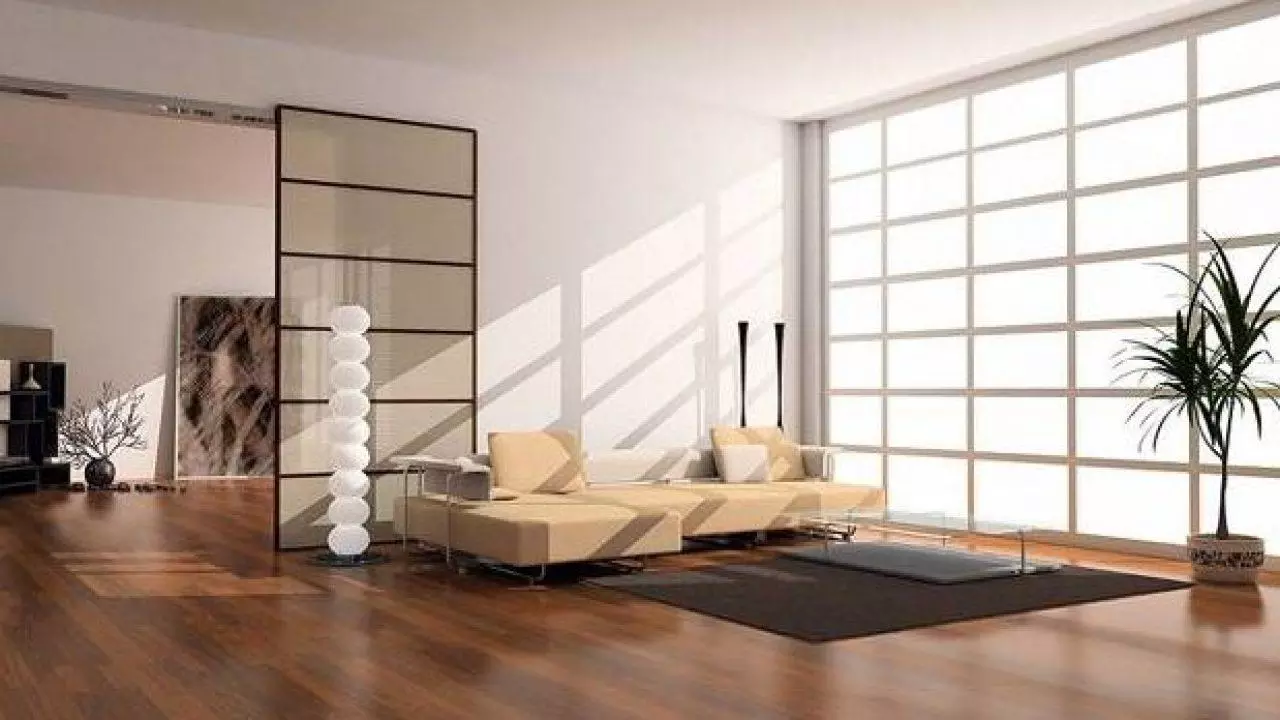
Heavy draperies are also a big no, no. All they do is block this natural light. Try keeping your windows clear of any obstruction, but if this is not possible, then opt for a simple bamboo shade or sheer, gauzy curtain panels. Natural light — what a bright way to light up your home!
9) Popular Colors in Japanese Design
In keeping with the natural beauty of the outside world, Japanese homes typically contain simple colors from nature. Predominant colors are derived from the browns of wooden elements, and the greens of plants. Flooring is either wood or grey stone tile, and most walls are replaced with screens that are covered in opaque paper.
This design results in a simple color palette that is very neutral. How can we mimic this in our own interiors? Try incorporating these natural wooden elements through wood shelving, wall panels, and flooring, or add the grey-tones of stone in your floors or even your furniture.Also, don’t forget to add plenty of green through natural houseplants. Simplicity is key when choosing your color palette. Look outside your windows to see what natural color elements you can incorporate in your home today.
10) Create a Zen Meditating Space
Try diving deep into the peaceful Japanese culture by creating a truly serene space in your home that is meant for meditating, having tea, or doing yoga. Look at the room featured below. It is an amazing nod to Japanese culture and would make a perfect place to have Japanese tea. Find a quiet place in your own home to layout a floor cushion for meditating or just sitting and relaxing. Don’t forget to add a water feature, so its trickle will drown away all distracting noises.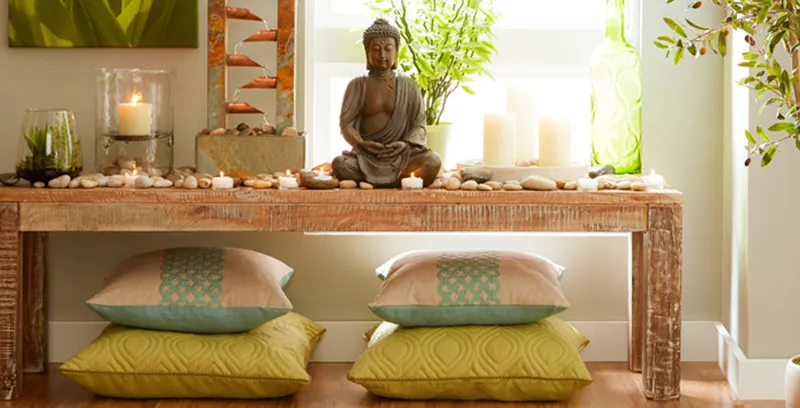
Paint the room in calming greens or browns, add some live greenery, play some calming music, and Voila! You have your very own, very Zen Japanese hideaway. While you may not have grown up surrounded by the ancient Japanese culture, you can still fall in love with its very peaceful design aesthetic that is deeply rooted in history.
In order to achieve this style, mimic its clean, simple, and minimalist design throughout all the rooms in your home. Add to your home: natural wood elements, simple greenery, natural lighting, modern furnishings, water features, a deep soaking tub, plush floor cushions, sliding doors or screens, a room for mediating, and plenty of colors derived from nature. All of these small pieces pull your home together into a rich Japanese interior design that speaks to its culture and love of nature.
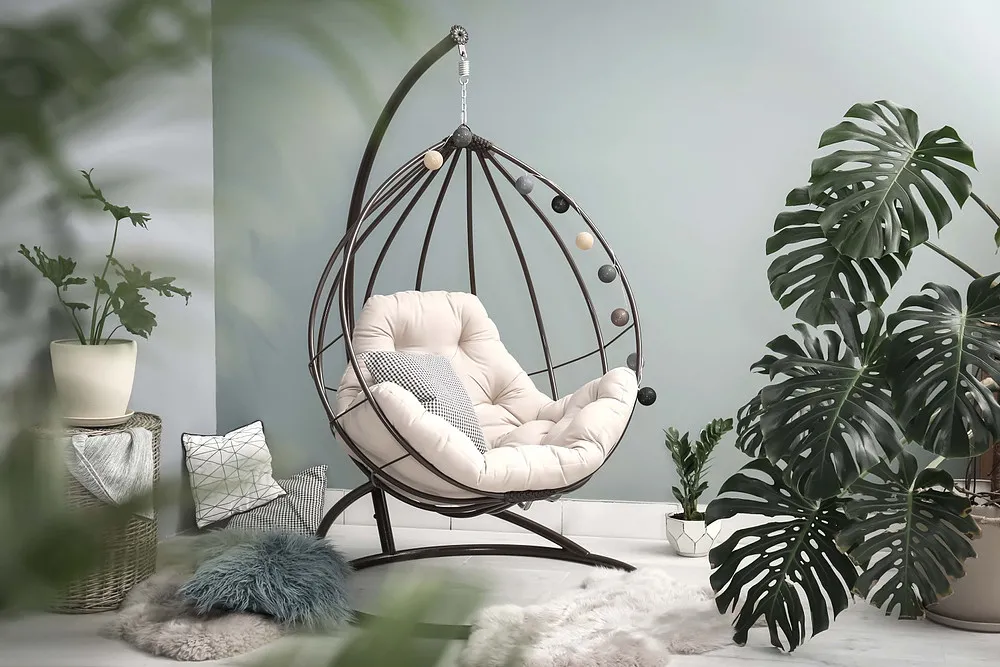
Japanese interior design is challenging to define but easier to describe. The first thing to know is how it fuses both traditional Japanese design and modern principles of design. However, Japanese interior design also incorporates numerous other styles and elements that make it difficult to integrate into a simple definition. Nevertheless, this blog will organize the principles that are common features of Japanese interior design:
1. Flexibility
Efficient use of resources is a fundamental part of Japanese culture. Japanese rooms are typically multi-functional rooms that maximize space. For example, Japanese futon beds are folded and stored in the morning allowing the sleeping area to be reused during the day. Japanese room layouts are often reconfigurable. For example, Japanese interior walls may be composed of shoji screens that can be rolled back to join rooms. This ability to re-partition rooms for different uses during the day is essential in Japan where a highly urbanized society puts space at a premium.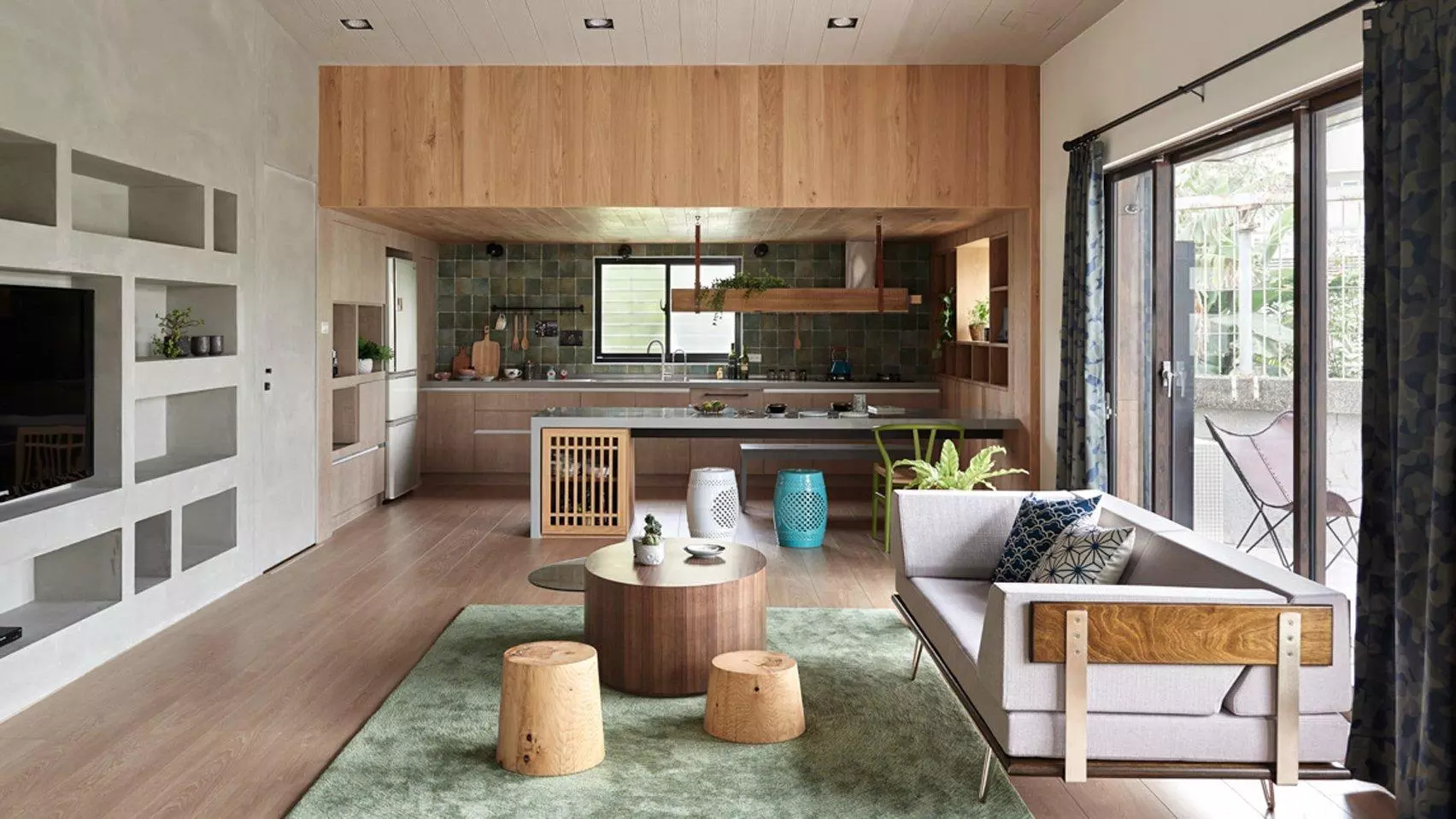
2. Privacy
Japanese society and culture values privacy and seclusion. Traditional Japanese interiors incorporate features such as paper screens (shoji) that allow light into a room while offering privacy for activities like prayer or meditation or intimate social activities.
3. Natural Materials
Both traditional and modern Japanese interiors incorporate natural materials such as fine woods, bamboo, silk, rice straw mats and paper. The addition of interior plants and exterior landscaping will add others dimension of natural elements and deepen the experience.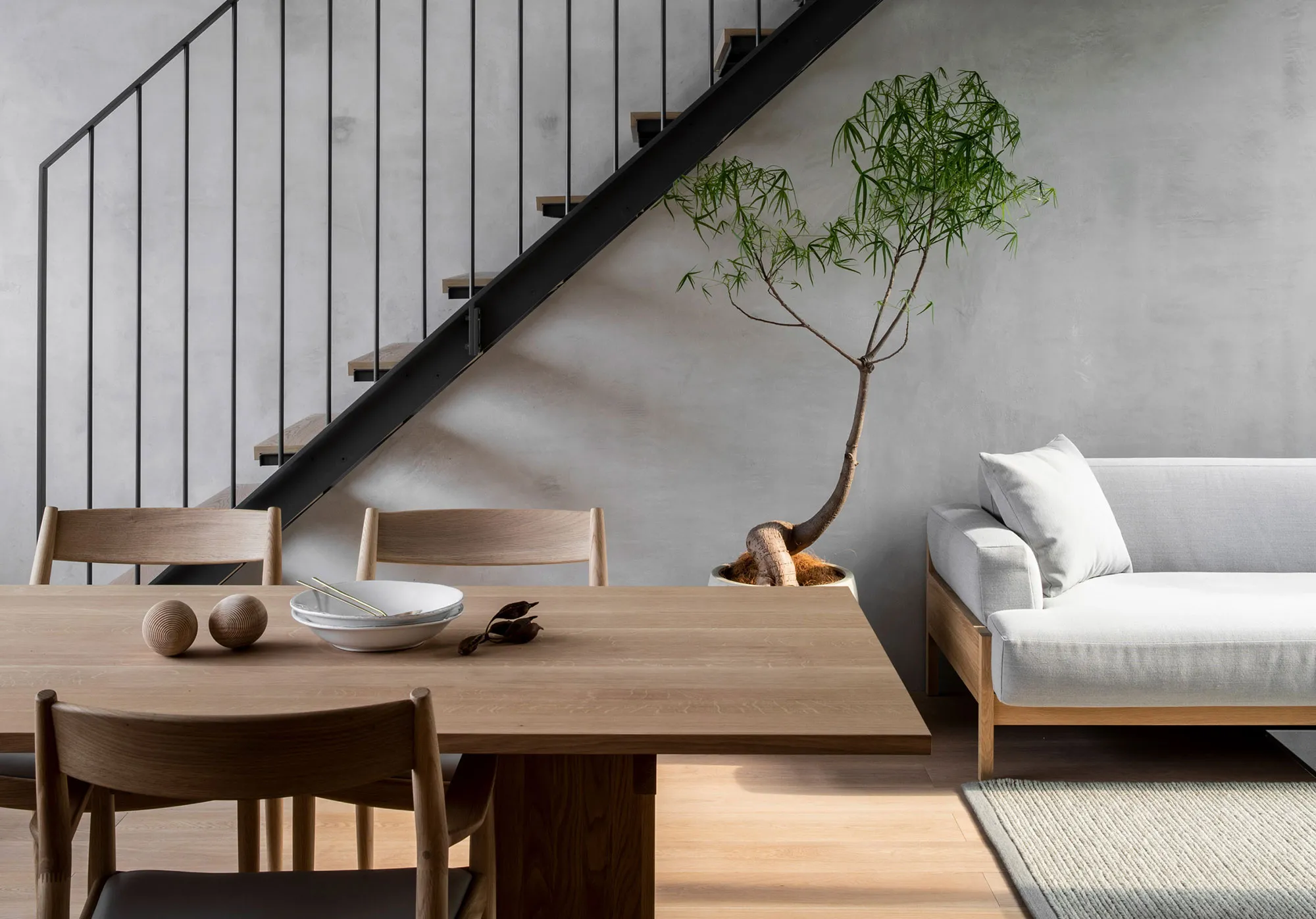
4. Simplicity
Because Japanese culture values simplicity, and the space in any room is just as important as the design of a room and its contents. Rooms that are designed with a Japanese style always have an uncluttered appearance and are always decorated sparingly.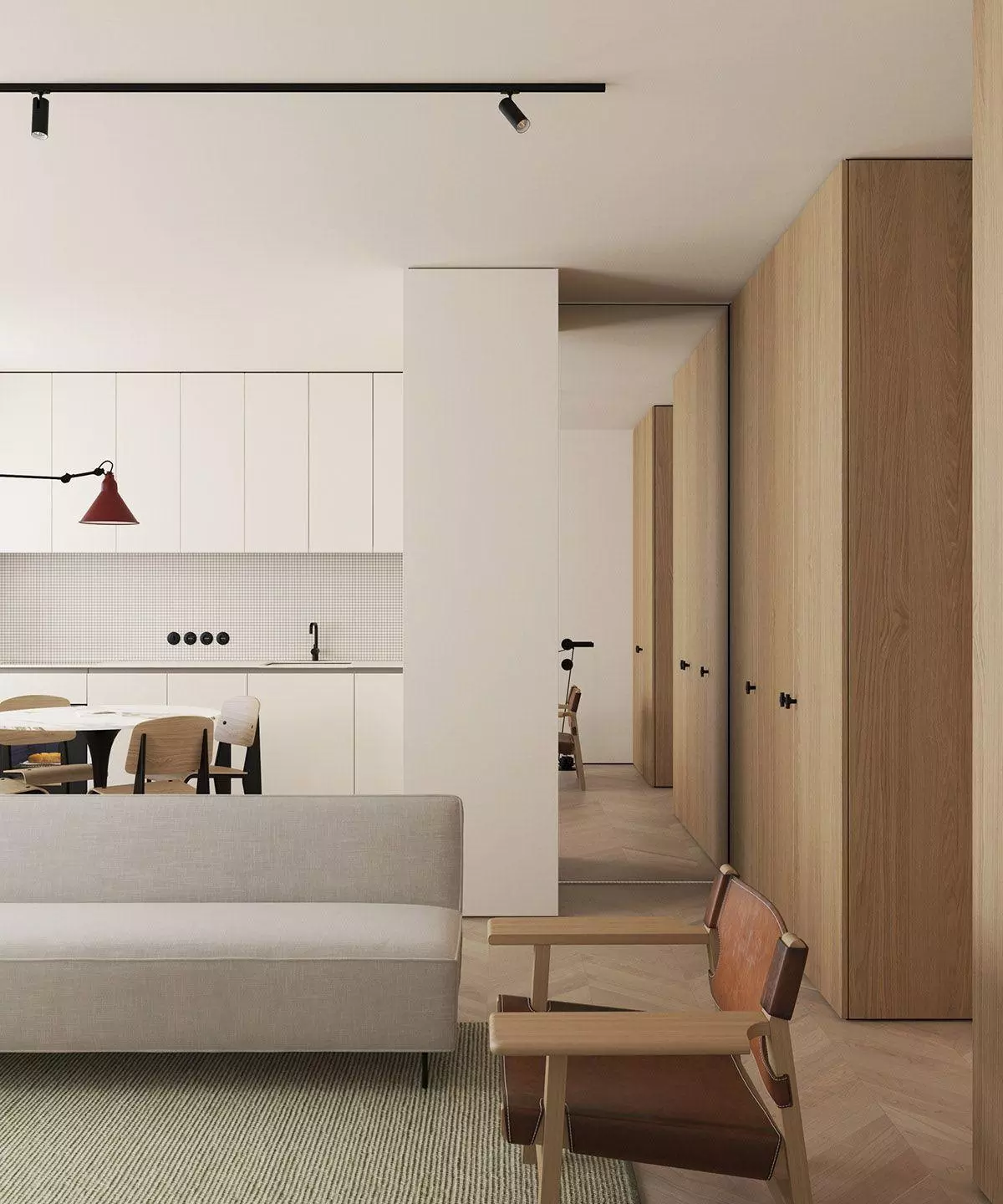
5. Subdued colors
Japanese interior design often uses the natural colors of materials such as wood, bamboo, paper and rice straw, instead of relying on stains or paints. When ‘unnatural’ objects or colors are incorporated, they tend to be subdued neutral palettes, including blacks, off-whites, grays and browns.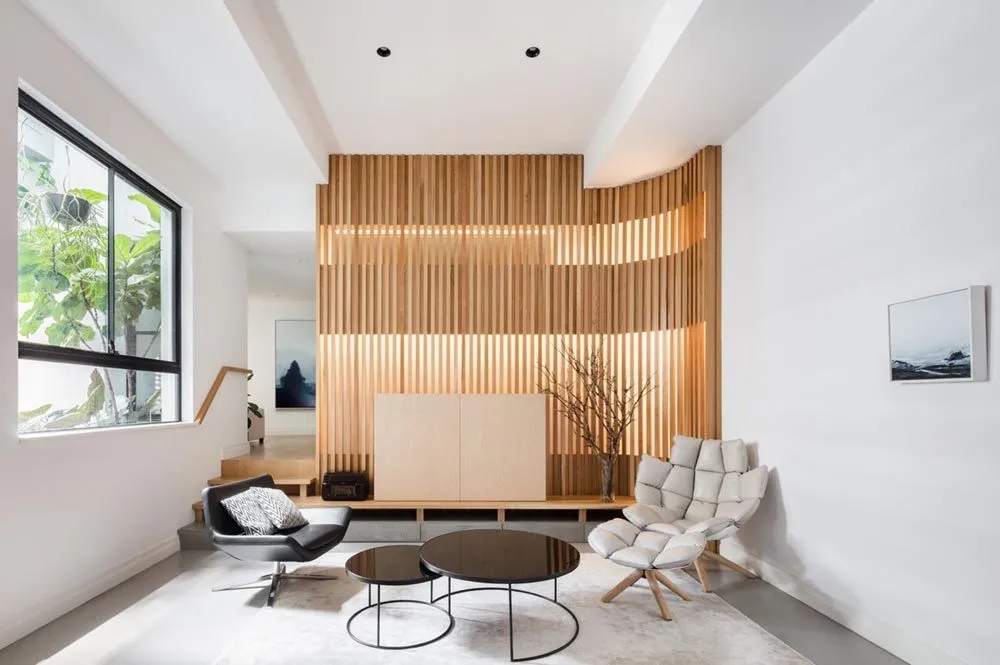
6. Diffused light
Japanese design generally uses diffused lighting techniques, which apply natural sources of light that penetrate interior rooms through translucent shoji screens. To achieve a sense of balance, sources of artificial light are diffused with natural materials, such as paper and natural fibers.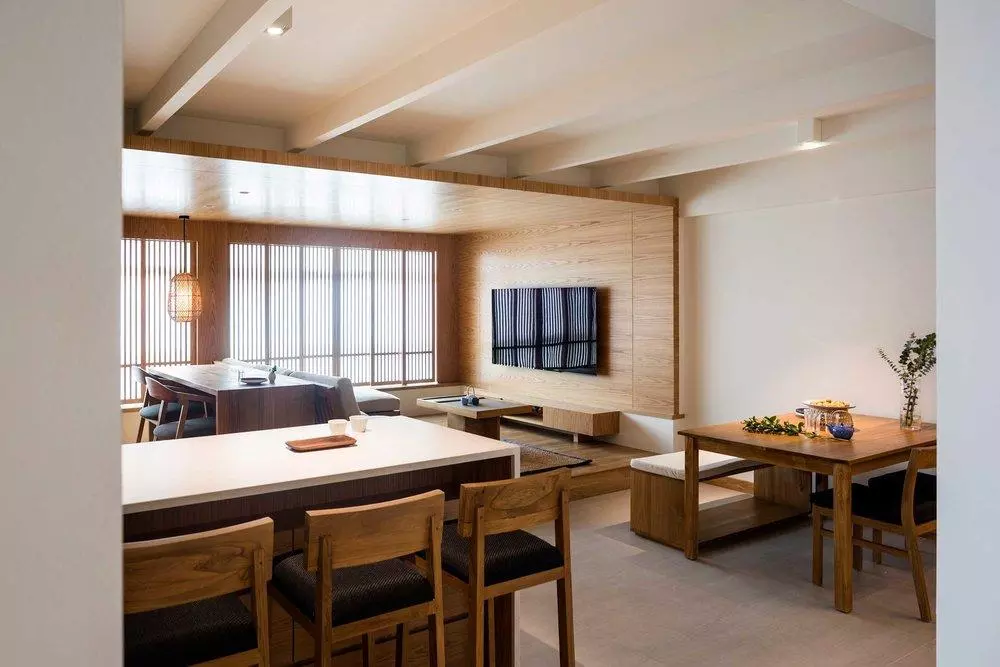
7. Traditional Japanese interior design elements
Japanese design is also characterized by the use of certain traditional elements that are still popular in any modern room designed with a Japanese style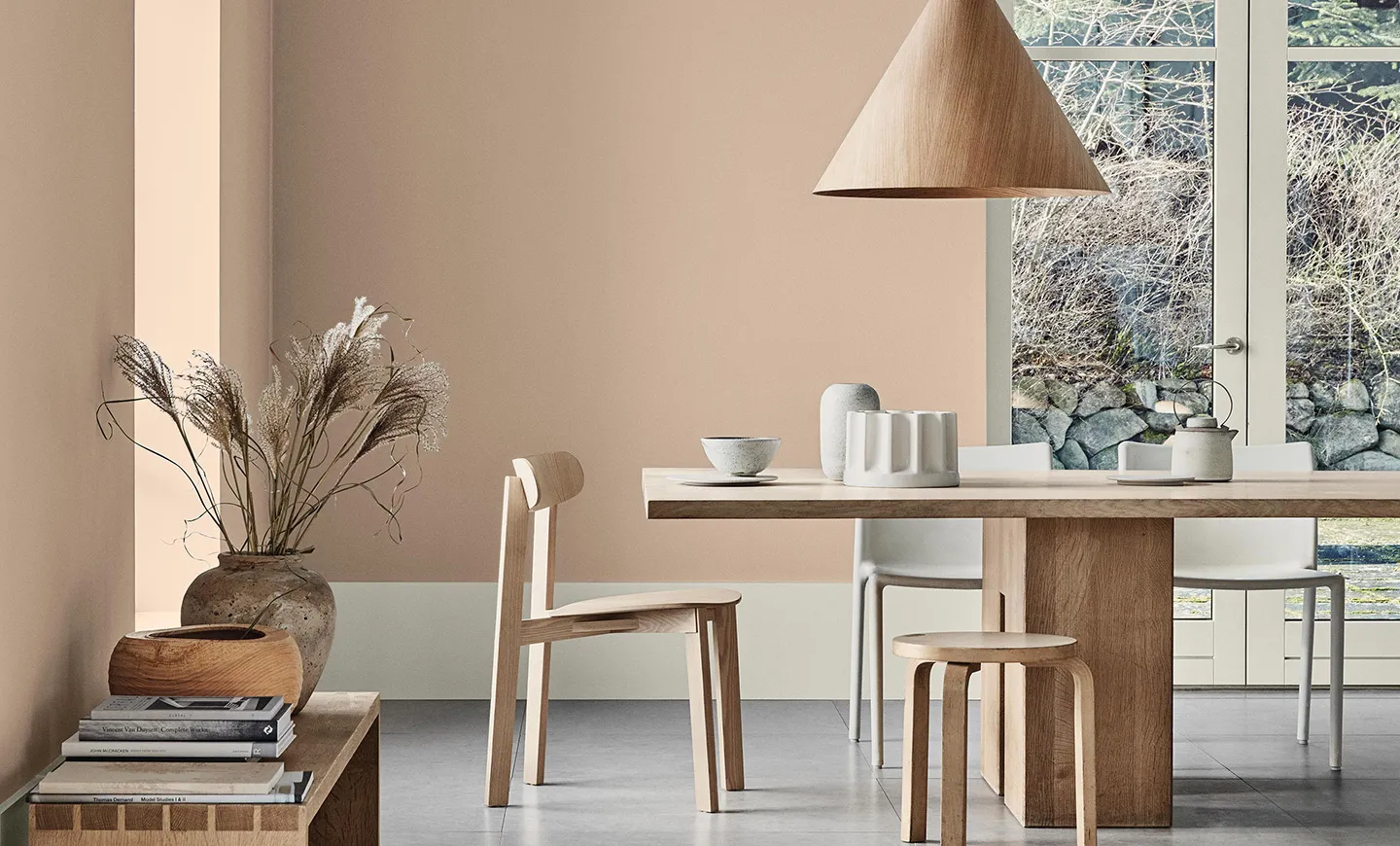
8. Fusuma
Fusuma are Japanese sliding panels that are typically made of wood and paper or cloth. Although they’re sometimes referred to as sliding-doors, they’re often used across an entire wall, which allows adjacent rooms to be joined in flexible ways. Traditionally, Fusuma were painted by hand.